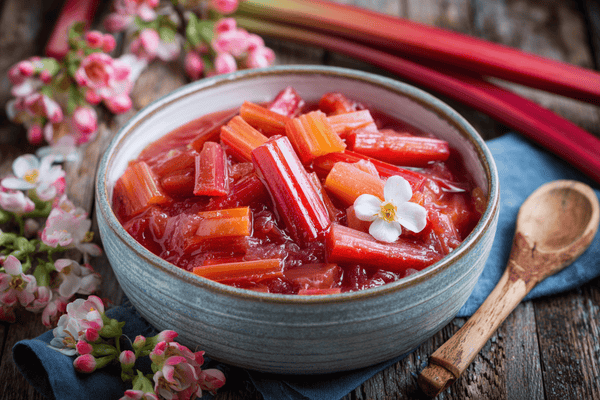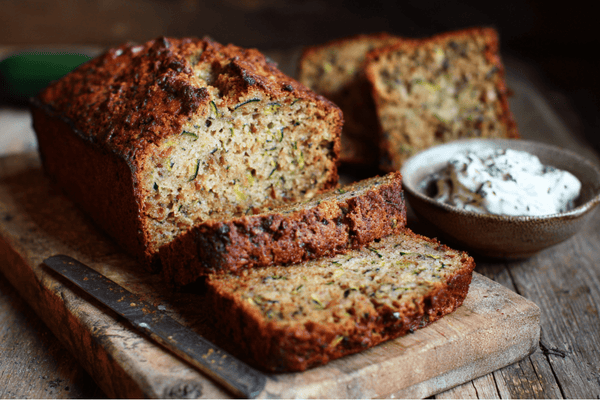 If you are buying a high-quality Japanese knife then you will be making a significant investment. These blades don’t come cheap and as such, you’re going to want to get your money’s worth. Nobody ever spent a small fortune on a knife only to throw it into a drawer and mistreat it.
If you are buying a high-quality Japanese knife then you will be making a significant investment. These blades don’t come cheap and as such, you’re going to want to get your money’s worth. Nobody ever spent a small fortune on a knife only to throw it into a drawer and mistreat it.But while most people offer some care to their Japanese knives, a lot of home chefs aren’t aware of just what it takes to look after these vulnerable blades.
If you don’t take proper care of your Japanese kitchen knives, then you’ll soon find that they go dull and rusty and just won’t perform like they did when they were new.
So, what does it take to look after a Japanese knife and how can we incorporate this into our daily routines? Well, this guide has all the answers and more. If you’re the proud new owner of a Japanese knife, you’ll need to read this!
Table of contents
The Worst Mistakes to Make With a Japanese Knife and How They'll Ruin It
People see knives as pretty rough tools largely because of how sharp they are. Yes, they can do some serious damage if they aren’t used properly but that doesn’t mean that they aren’t delicate. Misusing or mistreating your knife is a surefire way of ending its life prematurely. Yet there are things you are probably doing that are unintentionally causing harm to your Japanese knife.
Not Cleaning Your Knives Properly
 Did you know that the way you wash your Japanese kitchen knife can really impact how well it performs? A lot of us are guilty of simply throwing the knife into the dishwasher after we’ve used it but this is terrible practice.
Did you know that the way you wash your Japanese kitchen knife can really impact how well it performs? A lot of us are guilty of simply throwing the knife into the dishwasher after we’ve used it but this is terrible practice.You see, when you put the knife in the dishwasher, you’re exposing it to super high temperatures which could warp the carbon steel or stainless steel blade. Not to mention the possibility of other items banging on the blade and making it dull. When this happens, there is also a risk of the blade chipping because, while Japanese knives are sharp, the metal can be brittle due to how thin it is so we need to take really good care when cleaning our knives.
What to Do Instead
If you want to make sure that your knives are squeaky clean but also well looked after then stay as far away from the dishwasher as possible. Instead, clean your Japanese knives in warm water with a little delicate detergent, if needed.
Keep the blade facing away from you while cleaning for safety reasons and always hold the handle.
It’s also important to keep in mind that you should never leave your Japanese knife soaking in water. Even if it is the freshest, purest water on the planet, it can still cause the knife to rust and that’s the last thing anyone wants.
When you have finished cleaning your knife, do not allow it to air dry. The longer water is left on the knife, the more chance there is of it rusting. Instead, use a soft, dry cloth to remove any excess moisture. And never store your knives when they’re still wet…more on that later!
Using the Knife to Scrape Food
 I was recently visiting my parents and my dad offered to cook some fajitas for dinner. Of course, I wasn’t going to turn down the offer but I almost fainted when I saw him using the sharp side of his (very expensive) knife to scrape chicken off the chopping board and into the pan.
I was recently visiting my parents and my dad offered to cook some fajitas for dinner. Of course, I wasn’t going to turn down the offer but I almost fainted when I saw him using the sharp side of his (very expensive) knife to scrape chicken off the chopping board and into the pan.‘STOP’ I yelled at the top of my lungs. To which my dad looked very confused. He didn’t realise that doing this was a one way ticket to a dull blade. After all, it was a wooden chopping board and they’re gentle on your knives, right?
Well, they are but if you consistently drag the cutting edge over the surface of the cutting board, you’re asking for trouble.
What to Do Instead
I know it’s really convenient and easy to use the same tool to scrape food around that you’re using to cut but this isn’t doing your blade any favours.
Instead, you can flip the knife over and use the spine to move food around but this still isn’t the best option as this is going to cause damage over time. The best thing to do is choose another utensil to move food around such as a spatula or spoon. Just have it on hand next to the chopping board and you’ll soon get into the habit of reaching for it.
Storing Your Knives Incorrectly
 If you have purchased a good quality Japanese knife then please do not just put the knife into a drawer with all of your other kitchen utensils. Would you store a faberge egg in a marble drawer? Of course not so why would you store your delicate Japanese knife with your potato masher and wooden spoons?
If you have purchased a good quality Japanese knife then please do not just put the knife into a drawer with all of your other kitchen utensils. Would you store a faberge egg in a marble drawer? Of course not so why would you store your delicate Japanese knife with your potato masher and wooden spoons?It makes no sense. The knife edge is going to be constantly bashing against other utensils which, you’ve guessed it, is going to dull the blade. And we don’t need to tell you what might happen if you put your hand into the drawer and accidentally catch yourself on that sharp edge.
Moreover, I have seen people putting their knives away while they’re still wet. Please don’t do this as it is going to cause the metal to rust. Some people use good storage techniques such as a sheath or knife block and think that this is enough so continue to store wet knives; but think about the potential for mould and bacteria to build up. It’s just not worth it.
What to Do Instead
If your knife comes with its own storage box then keep that and store the knife in there when not in use. However, there are other knife storage options as follows:
● A knife block is a relatively good choice provided that it is made from wood as this is gentler on the knives. However, you still have to keep in mind that as you move the knife in and out of the block, the blade will rub against the wood which will dull it more quickly so while this is a better storage option than keeping knives in the drawer, it’s not the best.
● A magnetic knife rack is perfect for storing Japanese kitchen knives. You attach it to the wall and simply hang your knives on. There is no pressure or impact on the blade and this is a safe and secure way to store the knives.
● Some knives come with a sheath which goes over the blade. This is ideal if you have no other space but in a kitchen drawer as it’ll prevent the blade from hitting anything else that’s in there. However, we would recommend a leather sheath over a plastic one as this won’t cause friction on the blade, dulling it.
When you put your knives into storage, always make sure that they are clean, free from food and 100% dry!
Using Your Knife for Other Purposes
 Have you ever needed to do a job that’s totally unrelated to cooking and reached for a kitchen knife? You wouldn’t hammer in a nail with your most expensive stiletto heels, so why would you use your Japanese knives for anything other than preparing food?
Have you ever needed to do a job that’s totally unrelated to cooking and reached for a kitchen knife? You wouldn’t hammer in a nail with your most expensive stiletto heels, so why would you use your Japanese knives for anything other than preparing food?The sad truth is that so many of us are guilty of using these blades for other things; opening parcels, undoing screws, removing food packaging and much more. But they aren’t designed for this and all you’re going to end up doing is dulling the blade.
What’s more, even when you use the knife exclusively for food prep, you may still be doing damage if you’re using the wrong knife for the job. There are many different types of Japanese knives and each one is designed with a different purpose in mind. For example, there are multi purpose knives but then there are those whose blades are specifically made for boning or filleting fish, for example.
What to Do Instead
Don’t put your Japanese knife under any unnecessary pressure. Only use it for the purpose it has been made. If you find that your kitchen knives are just in easy reach when you’re doing other tasks, make a point of storing a tool kit in the immediate vicinity so you can reach for that instead.
When choosing which knife for preparing food, always go for the one that is most suited to the job. However, if you’re dead set on having just one high quality Japanese knife then I would recommend going for a multipurpose blade such as a gyuto or santoku.
Not Sharpening Your Knife
One of the things that Japanese knives are well known for is how sharp they are. If you are looking for a knife that’s going to be super effective and efficient then opting for a Japanese blade is a no brainer.While a lot of them will retain their edge for a considerable length of time, there’s always going to come a point that you’ll need to sharpen the blade. If you don’t then you are putting yourself at risk because a dull blade is much harder to work with. You’ll find it more difficult to cut the food and there is a greater risk of slipping. Just because the blade isn’t as sharp as it once was, it can still cut you and this time, rather than a clean cut, it’ll tear the skin and be a lot more painful.
What’s more, if you continue to work with a dull blade, you’re going to eventually wear it down to a point where even a good sharpening isn’t going to do much good.
What to Do Instead
Take the time to regularly sharpen your knives. It can be a pain and just ‘something else to do’ but it’s worth investing the time if you want your knives to last.
While there are various sharpening methods which you can read about in my post here, I’d always suggest using a whetstone for Japanese knives. This is one of the most efficient ways of getting a perfectly sharp edge that lasts.
However, it is important to keep in mind that using a whetstone does require a degree of practice. For this reason, I would usually recommend practising on an old knife first.
Overview of Care for Japanese Knives
It is so important to pay close attention to the state of your Japanese knives and provide care and maintenance regularly. Here is a checklist of everything you need to do day to day to get the most out of your knives.
● Having such a thin, sharp blade, Japanese knives are brittle and very susceptible to chipping and other damage if they come into contact with hard surfaces. For this reason, it is best to use a wooden end grain cutting board which will keep your blade sharper for longer. Things like bamboo, glass and marble are a big no-no!
● After you have finished using your knife, make sure to hand wash it in warm water and mild soap before drying it thoroughly.
● Over time, you may notice that a patina forms on your knife and this is totally normal. What’s great about this is that it can help to prevent rust but from time to time you may notice reddish coloured rust which should be removed.
● Make sure that you sharpen your Japanese knives as soon as they begin to show signs that they are going dull.


